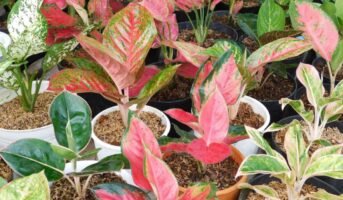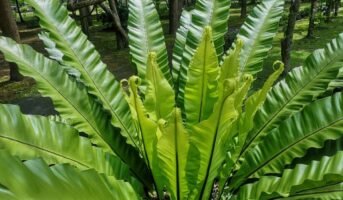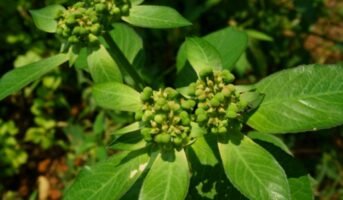Chamaedorea elegans is a kind of little palm tree that is endemic to the jungles of southern Mexico and Guatemala. This palm tree is also known as the neanthe bella palm, dwarf mountain palm or parlour palm.
The parlour palm is one of the houseplant palms that is marketed the most all over the world. It is one of a number of plant species whose leaves may be gathered and used to make xate.
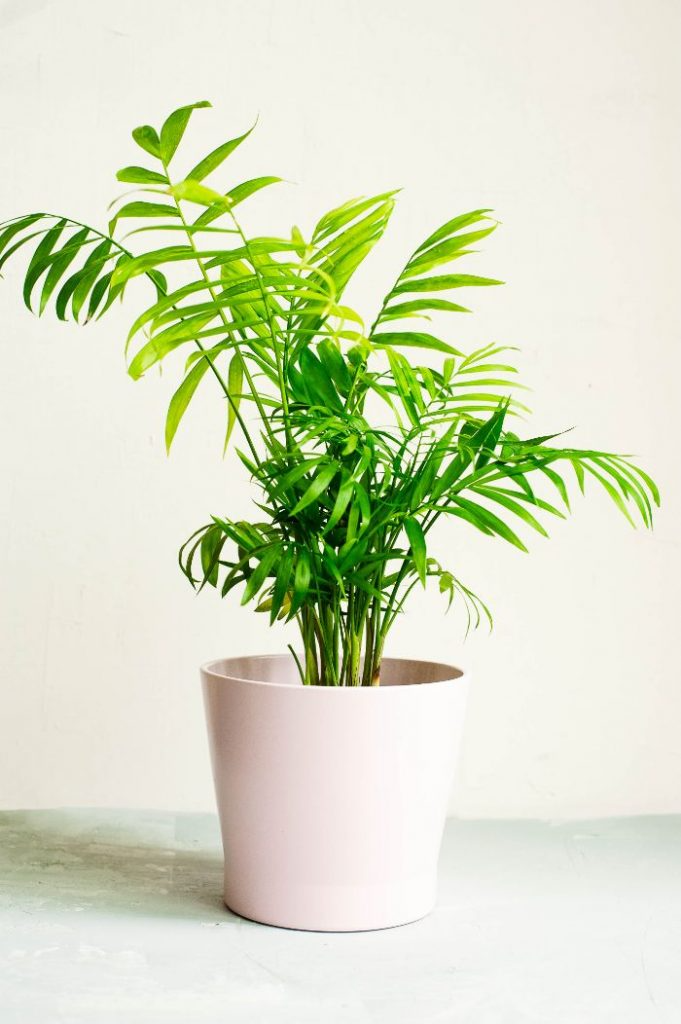
Source: Pinterest
Read about Pygmy Date Palm
Chamaedorea elegans: Facts table
| Family | Arecaceae |
| Scientific Name | Chamaedorea elegans |
| Common Name | Neanthe bella palm, dwarf mountain palm, parlour palm |
| Maximum Height | 16ft |
| Sun exposure | Bright, indirect light |
| Native Area | Rainforest of Southern Mexico and Guatemala |
| Bloom Time | Spring |
| Soil pH | 3.6-7.5 |
Chamaedorea elegans: Physical features
- It is a woody, rhizomatous plant with a thin green stem, and it grows to heights of 2–3 metres (6 ft 7 in – 9 ft 10 in) in tropical regions (occasionally to heights of 4–5 metres) (13–16 ft).
- It features crescent-shaped leaves that are perforated, upright buds, and flexible tubular stems that are devoid of spines and typically have pinnate foliage. The ringed stigma on this plant is 1.2 centimetres (1/2 in) long.
- The crown is composed of three to ten pinnate leaves with very long leaf blades (more when mature). One of the most notable characteristics of this species is the young age at which it begins to flower; in fact, some of the plants begin to bloom at the height of just 30 centimetres (12 in).
- The irregularly branching petioles that grow under or amid the leaves bear odoriferous, little blooms that can be pale yellow, yellow, or orange-red in colour.
- They open up in the shape of clusters of little balls that are devoid of petals and arise as lateral buds from the trunk of the plant. These are quite comparable to the ones that are produced by the mimosa tree.
- Pea-sized berries, which are black in colour, have a diameter of 6 millimetres and are sometimes produced after the flowers have bloomed. These berries are harvested in panic.
Chamaedorea elegans: Growing tips
- These plants are nearly often multiplied by expert growers from seed rather than cuttings. It is possible to effectively divide a clump into two smaller clumps. However, doing so is not encouraged since doing so would place too much stress on the plant and its roots.
- Identify a stem with a separate root system on your parlour palm and divide it.
- Getting your hands dirty is necessary when removing the entire plant from its pot.
- Disentangle any roots on that section of the plant with your hands, and separate them from the rest of the mother plant.
- Keep as many of the roots intact as you can if you cannot separate some of the tangled roots. Use a clean, sharp knife to cut them apart.
- Give the sections you have separated a thorough watering and plant them in a pot that has appropriate drainage.
- The newly planted stem might need a bit of help adjusting if it isn’t staying upright while it adjusts.
Chamaedorea elegans: Maintenance tips
- A light liquid fertiliser should be used once or twice throughout the growing season, but absolutely none should be applied during the winter.
- These plants require very little nutrition to thrive.
- Temperatures in the room should range from 65 to 80 degrees Fahrenheit for the best growth of the parlour palm.
- It is able to survive temperatures as low as 50 degrees Fahrenheit, but it will perish if it is exposed to frost. It should be kept away from draughty areas such as windows, vents, and doors that lead outside. It will do well in conditions of typical humidity.
- If you notice that the edges of your palm’s leaves are becoming dry or that the tips of the leaves are becoming brown, the problem is probably being caused by droughts of cold air or extended periods of dry weather.
- Raise the relative humidity of the air before you start overwatering the plants to fix this problem.
- Parlour palms, like many other palm species, are susceptible to overwatering and cannot handle being waterlogged or resting in a potting mix that is saturated with moisture. Maintain a constant amount of moisture, if at all possible.
- When in doubt, err on the side of slightly underwatering rather than overwatering the plant. When the top one inch of the soil is dry, water the plant. When the fronds of a plant become yellow, it means it needs more water.
- When growing plants inside, any high-quality potting mix that contains peat will do. Take care not to allow the mixture to degrade and turn into a sponge-like consistency.
- This palm will thrive in practically any type of soil, whether it be sand, loam, or clay when grown outside. However, it cannot survive on soil that is too saline.
- These are what are known as low-light plants; however, “low light” does not equal “no light.” The optimal growing environment for parlour palms is bright sunshine that is partially shaded. They frequently thrive when exposed to northern light.
Chamaedorea elegans: Uses
- Although it is more common to see it inside, the parlour palm may also be found outside, particularly in gloomy tropical yards and container gardens, where it is utilised to provide greening along foundations and borders.
- It has a long history of being prized for the tall, beautiful, green fronds that it bears, as well as for its resistance to varying temperatures and its overall resilience.
- This plant requires protection from strong, direct sunshine; thus, tropical shade trees such as mahogany are the ideal partners for it.
- It has the ability to enhance the amount of anions present within as well as clean the air by having a certain antibacterial impact.
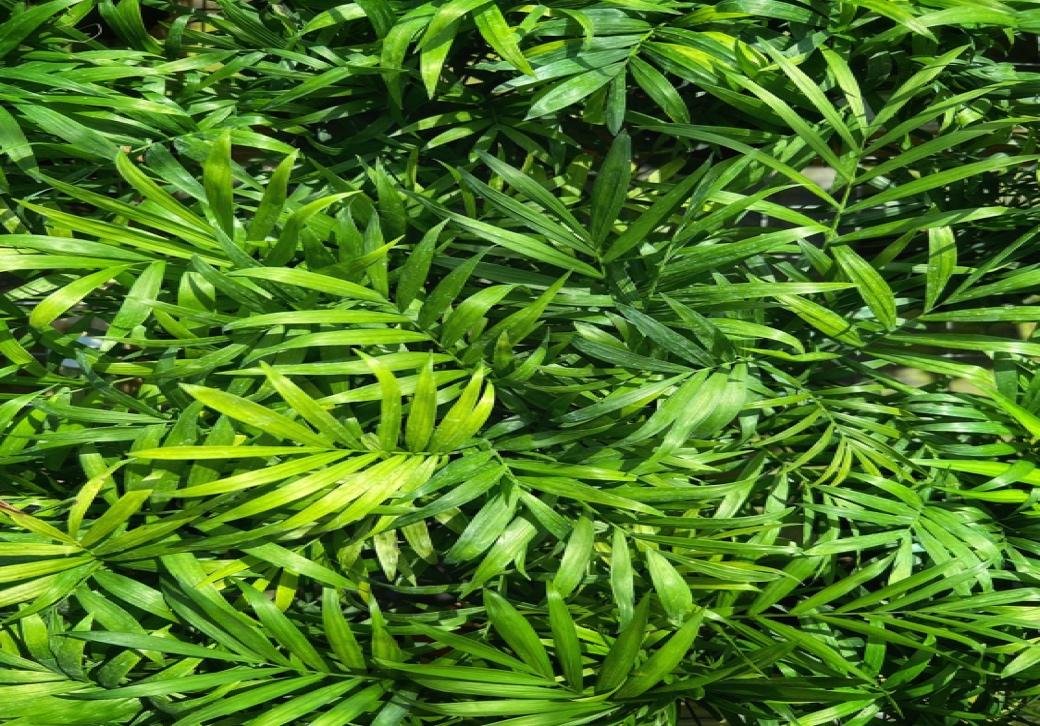
Source: Pinterest
FAQs
Is it possible for the parlour palm to grow in water?
No, parlour palms cannot grow in water since they cannot tolerate being submerged for long periods of time.
How quickly does the parlour palm mature?
The parlour palm is a slow-growing species that might take anywhere from two to three years to reach its peak height.
Are palm plants poisonous?
It should not be difficult to cultivate a parlour palm inside because these plants are not believed to be poisonous.
Housing News Desk is the news desk of leading online real estate portal, Housing.com. Housing News Desk focuses on a variety of topics such as real estate laws, taxes, current news, property trends, home loans, rentals, décor, green homes, home improvement, etc. The main objective of the news desk, is to cover the real estate sector from the perspective of providing information that is useful to the end-user.
Facebook: https://www.facebook.com/housing.com/
Twitter: https://twitter.com/Housing
Email: [email protected]


